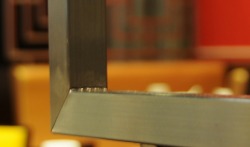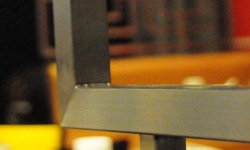Do I need that many megapixels?
A common mistake that most people make nowadays is that the more megapixels a camera has, the better it is. NO! A good camera is judged to be good from many different factors, not just only megapixels. More megapixels just means more resolution, or more clarity when the picture is viewed zoomed in on the screen.
What are megapixels?
A megapixel (mp) is 1 million pixels, and is a term used for the number of pixels in an image, and to express the number of image sensor elements of digital cameras or the number of display elements of digital displays. The megapixel count is often used as a figure of merit, though it is not to be determined as the camera quality.
Nikon's and Canon's megapixel tale
When studying some facts about Nikon and Canon DSLRs, you will always find that Canon DSLRs have more megapixels than Nikon of the same class. For example, the Nikon D90 (12.3mp) vs. the Canon 550D (18mp). Second example, the Nikon D700 (12.1mp) vs. the Canon 5D Mark II (21mp). Over the many years of digital photography, Canon is always the one with more megapixels, but never seems to excel in making a better sensor for better image quality.
Why do I want more megapixels and its pros and cons?
For many wildlife photographers, Canon is their obvious choice since they have more megapixels in their camera bodies and more updated telephoto lenses. By having more megapixels, photographers can carry shorter lenses, and later crop into the photo without losing much detail. However, the bad side is greater for most of us. Having more megapixels in the same sized sensor will give more details, but at the same time give more noise at high ISO. So, this is why most professional photographers go with Nikon, because of their high ISO but low noise capability.
What are megapixels?
A megapixel (mp) is 1 million pixels, and is a term used for the number of pixels in an image, and to express the number of image sensor elements of digital cameras or the number of display elements of digital displays. The megapixel count is often used as a figure of merit, though it is not to be determined as the camera quality.
Nikon's and Canon's megapixel tale
When studying some facts about Nikon and Canon DSLRs, you will always find that Canon DSLRs have more megapixels than Nikon of the same class. For example, the Nikon D90 (12.3mp) vs. the Canon 550D (18mp). Second example, the Nikon D700 (12.1mp) vs. the Canon 5D Mark II (21mp). Over the many years of digital photography, Canon is always the one with more megapixels, but never seems to excel in making a better sensor for better image quality.
Why do I want more megapixels and its pros and cons?
For many wildlife photographers, Canon is their obvious choice since they have more megapixels in their camera bodies and more updated telephoto lenses. By having more megapixels, photographers can carry shorter lenses, and later crop into the photo without losing much detail. However, the bad side is greater for most of us. Having more megapixels in the same sized sensor will give more details, but at the same time give more noise at high ISO. So, this is why most professional photographers go with Nikon, because of their high ISO but low noise capability.
Why do I want less megapixels and its pros and cons?
This is the complete opposite of what is said above. Most photographers (apart from wildlife photographers) will prefer to have less megapixels in their camera in order to have better high ISO results. With less megapixels in a photo, the file size will be smaller and less storage space will be needed. This is important to many professional photographers since they store their photos taken from the camera onto a portable hard drive, and a smaller file size will enable them to store more of them. However, with less megapixels, you loose some details when zoomed into a photo viewed on screen. This is no big deal unless you need to crop into your photo a lot.
So how do I choose?
Simple. If you are a wildlife shooter, the choice is Canon. They have more megapixels, and the most important, they have more updated telephoto lenses. But for everyday shooting, professional client shooting or event shooting, Nikon is the wise way to go.
This is the complete opposite of what is said above. Most photographers (apart from wildlife photographers) will prefer to have less megapixels in their camera in order to have better high ISO results. With less megapixels in a photo, the file size will be smaller and less storage space will be needed. This is important to many professional photographers since they store their photos taken from the camera onto a portable hard drive, and a smaller file size will enable them to store more of them. However, with less megapixels, you loose some details when zoomed into a photo viewed on screen. This is no big deal unless you need to crop into your photo a lot.
So how do I choose?
Simple. If you are a wildlife shooter, the choice is Canon. They have more megapixels, and the most important, they have more updated telephoto lenses. But for everyday shooting, professional client shooting or event shooting, Nikon is the wise way to go.
© 2010 longxxlong.weebly.com




